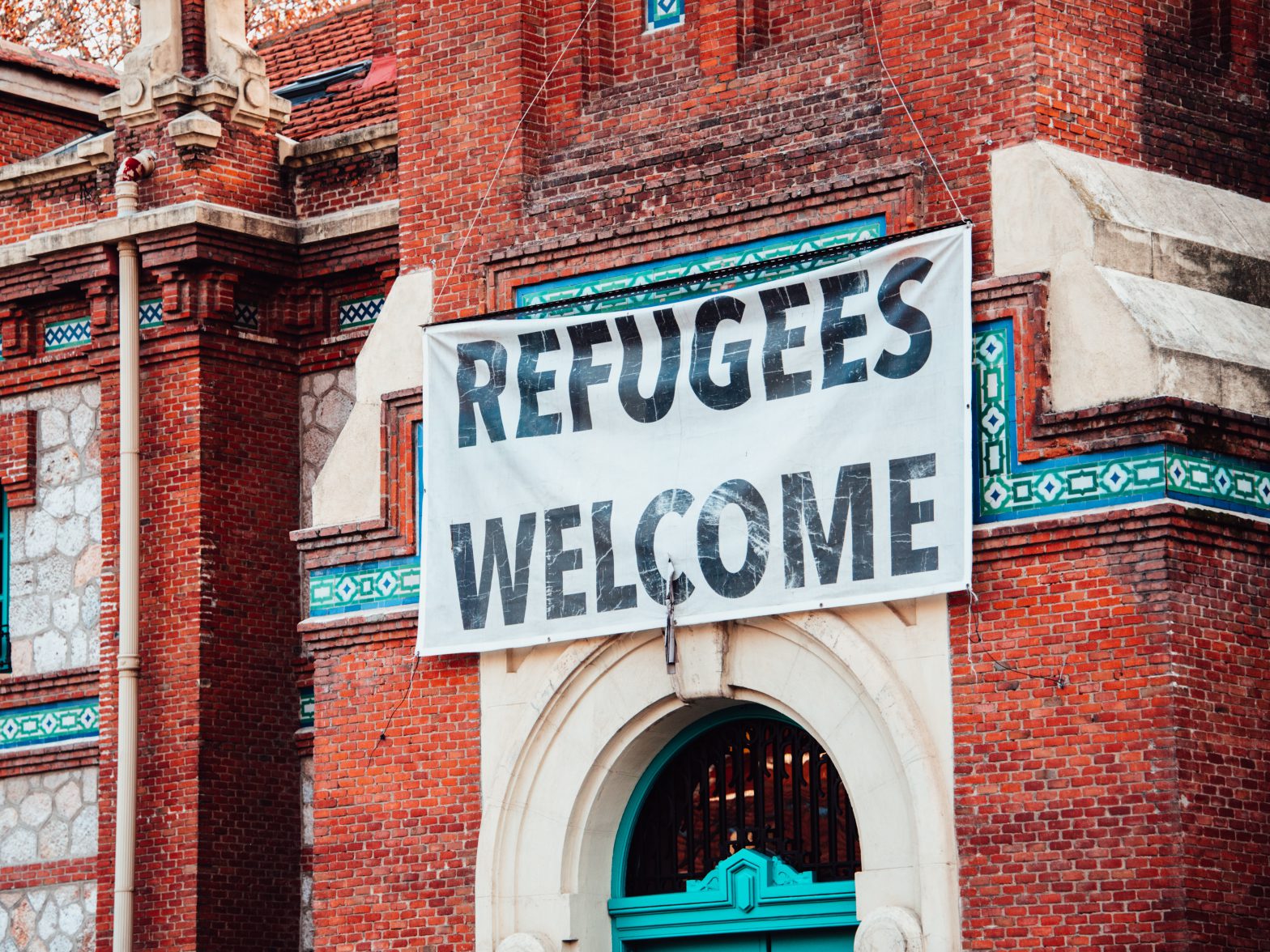
This blog post is Part 3 of a four-part series highlighting the funding strategies, challenges, and lessons learned shared in The Thoughtful Funder’s Guide to Global Giving, produced by TPI’s Center for Global Philanthropy in 2019. Check out Part 1: The Thoughtful Funder’s Checklist for Global Giving, Part 2: Philanthropy’s Role in Increasing Access to Clean, Safe Water, and stay tuned for the fourth and final post about improving conditions for women and girls.
—
The wave upon wave of forced displacement shifting global populations in recent years is an unprecedented crisis. By the end of 2019, 79.5 million people worldwide had been forcibly displaced due to persecution, conflict, violence, human rights violations, or events seriously disturbing public order. In addition, more than 20 million people a year are forced to leave their homes due to climate-fueled disasters, with more still being forced to flee across borders to find refuge outside their home country.
Now, with the COVID-19 pandemic affecting nearly every corner of the globe, issues for refugees and the countries most impacted by their movement are being exacerbated. According to the United Nations High Commissioner for Refugees (UNHCR), “Refugees and other displaced people belong to the most marginalized and vulnerable members of society. They are particularly at risk during this coronavirus disease outbreak because they often have limited access to water, sanitation systems and health facilities. Over 80 percent of the world’s refugees and nearly all the world’s internally displaced people are hosted in low- and middle-income countries. They frequently face specific challenges and vulnerabilities that must be taken into consideration in COVID-19 readiness and response operations. Keeping the most vulnerable safe means keeping everyone safe.”
A challenge so widespread and so complex both at its origins and in its international ripple effect can be daunting. It was overwhelming even before COVID-19 hit. And yet, thanks to leaders in philanthropy who have paved the way, there are clear steps for funders of any size and type to prioritize this issue and have an impact. These philanthropists, highlighted in The Thoughtful Funder’s Guide to Global Giving, demonstrate how funders can choose from several strategic roles that provide both immediate and long-term support for hundreds to thousands of displaced people. Yet the context for refugees is complex, and it changes frequently based on national politics and policies. As funders consider implementing one of the six strategies below (or another strategy), there are four challenges we’ve identified that are worth keeping in mind as you seek to have impact with funding in this field.
First, the support needed for refugees varies by country. National-level laws and policies vary widely, as do the level of support displaced people receive. Funders from afar need to be well-educated on the multiple players at international, national, and local levels for guidance on where new involvement would create greater leverage.
Second, a conflict-sensitive approach is needed that avoids contributing to tensions between refugees and host communities. At a time when every community is over-stressed on the health care, education and economic fronts, resources for refugees need to complement rather than compete with services for local people in order to minimize or avoid community animosity.
Third, the needs of refugees go far beyond basic access to food and shelter, requiring a holistic approach to philanthropy. Food and shelter are certainly needed, but we must also extend the definition of basic needs to include psychosocial wellbeing, safety and security, and a long-term sense of stability and belonging.
Fourth, long-term solutions are important but easily forgotten. Crisis response is paramount, driving need for and attention to short-term contributions – financial and otherwise. That said, long-term and sustainable solutions are critical as well, such as creating access to and opportunities for quality education and pathways to employment for refugee populations.
It is important to note that these challenges all apply equally to funders of every size and geographic focus. In fact, smaller foundations new to the space can often help energize work already being done, and experienced funders can play an additional role by supporting education, convenings, and other mentoring to bring new funders into the fold faster and more efficiently. These caveats also apply to the six philanthropic response strategies for addressing the global refugee response crisis outlined below.
Six Strategies for Funders to Consider
- Focus on immediate needs. Considering the needs of children can be a strong way to target immediate response: food, shelter, health care, and education. Syria once had a youth literacy rate of 94-96%; now Syrian refugee children have been out of school for years and are growing up in foreign lands they will likely adopt as their own. Literacy and mental health care are significant short-term options with long-term impact.
- Advocate globally and support refugee rights. As funders begin to work globally, the policies and laws under which communities are either progressing or are being held back become clear. Advocates such as the International Refugee Assistance Program (IRAP) actively create change in countries the world over to support displaced people.
- Recognize different needs of different populations. Refugee populations are not universal in their cultures or their needs. Women and girls, LGBTQ+, and people with disabilities are often experiencing additional layers of persecution and violence not immediately evident to outside actors.
- Be flexible and fill in the gaps. Much as the COVID-19 pandemic is teaching funders the need for allowing grantees flexibility, global philanthropy often requires the same kind of thinking. Exploring ways to think outside of the box with funders and within situations is critical.
- Fund grassroots organizations. Organizations and movements that arise from within displaced communities offer powerful partnerships for change. Their leaders not only have identified challenges but have come up with workable and culturally appropriate solutions, and have momentum behind them.
- Fund long-term resettlement. The average length of time spent as a refugee is 10 to 17 years – for some this is an entire young lifetime. Many refugees will not be able to return to their countries, no matter how much they wish to, and many climate refugees may not have a home to which to return. Supporting partnerships that seek to integrate refugees into their new homelands is a commitment to the future of refugees and broader communities.
If you would like more detail on opportunities for funder collaboration in this space and others, we encourage you to download The Thoughtful Funder’s Guide to Global Giving. And whatever your area of focus is, it’s helpful to remember the six Powerful Practices used by thoughtful funders as unearthed through our research for this guide. These ideas are not new, but they continue to re-emerge as core values and principles to guide more ethical and participatory cross-border philanthropy.
—
Click here to learn more about TPI’s Center for Global Philanthropy and our work supporting funders of all kinds who wish to effectively give around the world. The Center supports individuals, families, foundations, and companies to have an impact through their giving. Contact us to learn more about how we help funders and companies do more and better giving worldwide.


